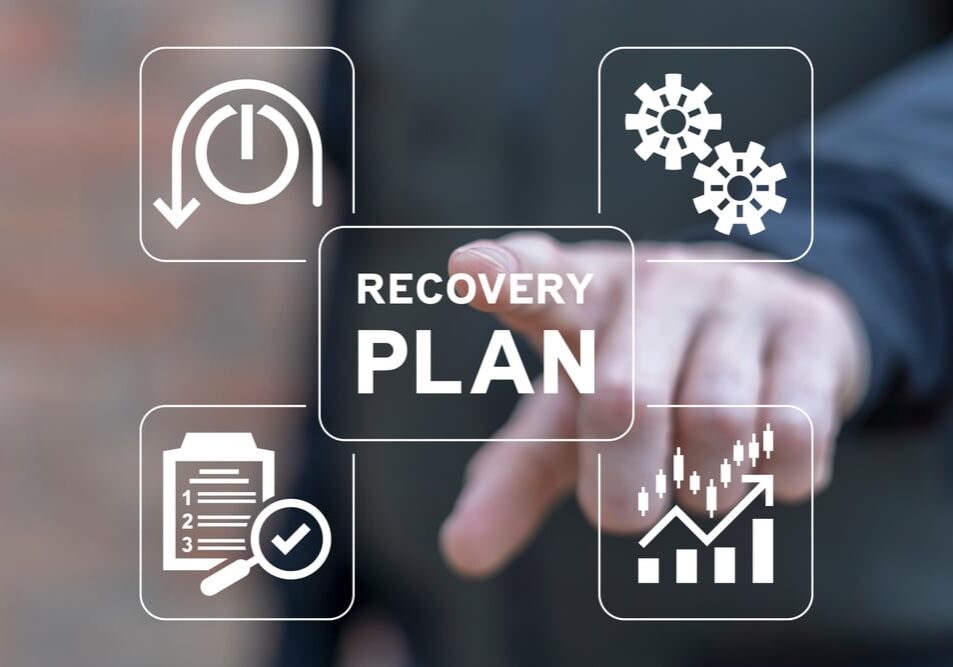Running a small business comes with countless challenges—tight budgets, limited staff, and the constant pressure to stay competitive. Among these challenges, managing technology and preparing for unexpected disruptions often gets overlooked. Yet, any small business, regardless of size or industry, can face events that threaten operations: cyberattacks, power outages, hardware failures, natural disasters, or even simple human error.
For a small business, downtime isn’t just an inconvenience—it can result in lost revenue, frustrated customers, and long-term operational setbacks. That’s why disaster recovery (DR) is essential. Fortunately, disaster recovery doesn’t have to be complicated or expensive. With the right planning, tools, and strategies, small businesses can bounce back quickly, protect their data, and maintain business continuity. In this post, we’ll break down how small business owners can implement simple, effective disaster recovery plans that minimize risk and downtime.
Understanding Disaster Recovery for Small Businesses
Disaster recovery is the process of restoring critical business systems, applications, and data after an unexpected event disrupts normal operations. While it often sounds technical, the core idea is simple: ensure your business can continue operating even when things go wrong.
Many small businesses mistakenly assume that backing up data alone counts as disaster recovery. While backups are critical, they are only one piece of the puzzle. A comprehensive disaster recovery plan addresses multiple aspects: data restoration, system functionality, communication, and process continuity.
The importance of disaster recovery has grown in recent years due to increasing cyber threats, hardware vulnerabilities, and environmental risks. Small businesses are particularly at risk because they often lack dedicated IT teams or enterprise-grade infrastructure. By implementing an accessible and structured disaster recovery plan, small business owners can protect their operations, reputation, and revenue—even in the face of significant disruptions.
The Costs of Downtime
For small businesses, downtime can be expensive. Even a few hours without access to critical systems can translate into lost sales, missed client communications, and delayed projects. The costs of downtime include both direct and indirect impacts:
For small businesses with tight margins, even short-term disruptions can be devastating. Proactive disaster recovery planning ensures that when disruptions occur, their effects are minimized, and operations can resume as quickly as possible.

Leveraging Technology for Quick Recovery
Modern technology makes disaster recovery simpler and more accessible for small businesses. AI-assisted monitoring, cloud-based backups, and automated recovery tools allow business owners to bounce back quickly without extensive IT expertise.
Automated Backups:
Tools can automatically back up data at scheduled intervals, ensuring nothing is missed.
Cloud Solutions:
Cloud-hosted applications and data allow for fast recovery from anywhere, even if physical offices or servers are compromised.
Failover Systems:
Some setups provide real-time replication of data and systems, automatically switching to backup resources if the primary systems fail.
AI Monitoring:
Artificial intelligence can detect system anomalies or performance issues early, preventing minor issues from escalating into full-blown disruptions.
These solutions make disaster recovery not just feasible but highly efficient for small businesses, even with limited IT resources.
Best Practices for Small Business Disaster Recovery
Implementing a disaster recovery plan is not a one-time task—it requires strategy, ongoing attention, and alignment with business priorities. Here are some best practices for small business owners:
Following these practices helps small businesses implement practical, effective disaster recovery strategies without unnecessary complexity.

Testing and Maintaining Your Disaster Recovery Plan
Testing is often overlooked, but it’s critical. A disaster recovery plan that hasn’t been tested is just a document on a shelf. Small businesses should simulate outages and perform regular drills to:
Identify Weak Points:
Testing reveals vulnerabilities in systems or procedures.
Improve Response Times:
Staff become familiar with their roles, reducing delays during actual events.
Validate Backup Integrity:
Ensure data can be successfully restored without corruption.
Refine Processes:
Learn from each test to streamline and simplify recovery steps.
Regular testing builds confidence that the plan works, so small business owners can rest assured they’re prepared for the unexpected.
How a Managed IT Partner Can Simplify Disaster Recovery
For small business owners, disaster recovery can feel daunting—but it doesn’t have to be. Partnering with a managed IT service provider, like SET, can simplify every aspect of disaster recovery.
A managed IT provider can:
Outsourcing disaster recovery to an expert allows small business owners to focus on growth and operations, knowing that their technology infrastructure is resilient, secure, and capable of bouncing back quickly.

Planning Today for a Secure Tomorrow
Disaster recovery doesn’t need to be complicated, expensive, or intimidating. By focusing on simple, actionable strategies—such as automated backups, redundant systems, clear procedures, and regular testing—small businesses can protect themselves from costly disruptions.
With the right technology, planning, and expert support, disaster recovery becomes a proactive strategy rather than a reactive scramble. AI-driven tools, cloud solutions, and managed IT services make it easier than ever for small businesses to maintain continuity, safeguard their data, and quickly resume operations after an unexpected event.
Preparing today ensures that tomorrow’s challenges don’t derail your business. A well-designed disaster recovery plan empowers small business owners to operate with confidence, minimize downtime, and continue growing—no matter what obstacles come their way.
